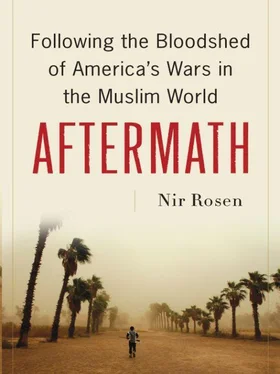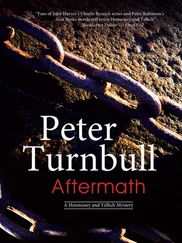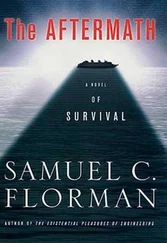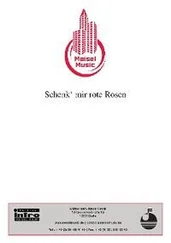The next day Team Prowler and the PR trained at the shooting range. Sergeant Dyer was dejected. “The Provincial Reserve aren’t ready,” he said. “Their training is too short. They can’t drive. They can’t shoot. They’re weak on tactics, lacking in motivation. In training the last few days, after two or three hours their performance drops even more. Squad leaders are terrible because in the Soviet system NCOs don’t do anything.” Mansur joined in, laughing. “They couldn’t hit targets,” he said. “Some hit the sand.” Out of eight men in each group, three could aim at a target, Specialist Campos told me.
Police working in the south had a high rate of desertion. They often refused to work if Americans were not present, and they were afraid to go on operations. Their vehicles were more vulnerable to IEDs and attacks. They lacked ammunition, fuel, and other essential supplies, and they didn’t have the logistical ability to provide it for themselves.
Bill Hix, an experienced Special Forces colonel with extensive COIN experience, led the Afghan Regional Security Integration Command in Kandahar, which was in charge of training and mentoring the Afghan police and army in southern Afghanistan, including Helmand. There were forty-one portraits on his wall of Americans from his organization who had died. All but two had been killed by IEDs. He would need a much bigger wall for the Afghans. From January 2007 to April 2009, he lost 2,096 Afghan police and 949 soldiers. Hix did not believe more American troops were needed, merely an “adequate” police force and army, whose numbers he hoped would double. “The police should be identifying clandestine networks,” he said. But there weren’t nearly enough of them: the ratio in southern Afghanistan was two police per thousand people. In the United States it was four per thousand; Afghanistan was at war, so more were needed. “We’re driving this car as we’re changing the engine,” he said.
Should Afghanistan cease to be a protectorate of the West, it wouldn’t be able to pay for its own security forces. It doesn’t have the resources to fund such a large military. The result, instead, would be a heavily militarized society. With the end of American subsidies, the men with weapons and training would return to warlordism and militias, preying on the population. Pakistan’s army, which had been subsidized by the Americans for years, became a state unto itself, independent of the civilian control it should have answered to.
An effective police requires an effective justice system, including judges, lawyers, court clerks, prisons, and an administrative system. Corruption among the police and other government officials was also a huge problem for the Soviet occupation of the 1980s. Afghan cops couldn’t be expected to turn down bribes when they knew that everyone else in the system was taking them. And it was the cops who took the greatest risks in the country’s most dangerous job. The high illiteracy rate also made it difficult to build a system of justice. How could records be kept? Training lasted only a couple of months. Creating and training security forces were difficult enough in peacetime, but they were even more challenging during war. After training the cops returned to the same conditions: corruption and lack of support. They were the only face of the Afghan government most people saw, and it was too often an ugly one.
Helmand is not only the worst province in Afghanistan; it is also the wealthiest. It has a sophisticated irrigation system and some paved roads. Its dam helps to pump out cheap, stable electricity. It is little wonder that Helmand, with some of the best agricultural land in the region, is the world’s largest grower of poppy. With the best resources in the country, it has been a convenient place for an insurgency to sustain itself. Although taxing heroin sales is one source of the Taliban’s finances, in fact the drug trade funds everybody and all sides in Afghanistan, and the Taliban get most of their funding from donors in the Arab Gulf and elsewhere. Heroin is Afghanistan’s only real industry, but it has created a parallel shadow economy that undermines and corrupts the government. The drug trade is more of a consequence than a cause of Afghanistan’s many problems.
In the 1980s and ’90s the Alizais dominated Helmand at the expense of their rival tribe, the Ishaqzais. Nasim Akhundzada was the top mujahideen commander in the area and was responsible for creating the poppy industry in Helmand. He brutally forced farmers to grow opium and established a sharecropping system that trapped poor indebted farmers in an endless cycle of planting opium. His brother Muhamad was his army commander, and Muhamad’s son Sher Muhamad Akhundzada, known as SMA, would go on to control Helmand. The Ishaqzais were dominant during the Taliban’s reign, from 1994 until 2001. But when SMA became governor after the Taliban were removed in 2001, the Ishaqzais were once again marginalized and punished. The Taliban took advantage of this rivalry to increase their influence over both majority-Ishaqzai areas and also Alizai groups. Most of the governors appointed by Kabul in 2002 were warlords. Helmand had no effective administration after 2001. The provincial government did not provide anything to locals, and it abused them. Between 2001 to 2006, SMA and those around him labored to build a strong base of support in Helmand, and he placed his men throughout the province’s police and government. Under his reign poppy growers affiliated with him were immune from eradication. SMA pressured farmers to grow poppy, leading to a 160 percent increase in the harvest. Meanwhile, the Taliban protected poppy farmers whose crops were targeted for eradication.
It took a while for Helmand to get really bad. In 2002 Afghan security locations in Helmand on the Pakistani border were attacked several times. In 2004 some clerics in the area urged their flocks to fight the Americans and Afghan government. Although militias allied with President Karzai helped ward off the Taliban, they also abused the population and took advantage of their power to punish rivals. They would also give false tips to the coalition or the Afghan security forces against their rivals. These fears drove many to seek protection with the Taliban. By 2004 it was clear that locals were being recruited in Helmand to join the new Taliban. Those who had suffered at the hands of Afghan security forces were especially susceptible to recruitment. In 2005 the Taliban began to set up strongholds in Helmand, and by 2006 they dominated most of Helmand. That year it became common for Taliban attacks in Helmand to involve hundreds of fighters.
Dad Muhamad Khan, the Helmand boss for the National Security Directorate under SMA’s reign, was known for being abusive. But the American military backed him because of his loyal service. In 2006 the British and the UN insisted that SMA be removed, and Karzai finally relented. The British had just taken over control of Helmand and discovered ten tons of heroin in the governor’s house. SMA’s successor as governor was Engineer Daud. Though Daud had not had a militia in the past, he demanded that he be allowed to set one up for his own survival. The government allowed him to have up to five hundred men. SMA still had a good relationship with Karzai, though, and was made a senator. His loyalists plotted against Daud, and Karzai made sure SMA was still the real power by appointing his brother as the deputy governor. Daud was pressured to support poppy eradication, which cost him the support of the local population. In late 2006 Karzai fired Daud, who was trying to go after militias and the unruly police of Helmand. Daud’s police chief was sent elsewhere. British Prime Minister Tony Blair tried to save Daud but failed. The British were angry and blamed the Americans for Daud’s removal. Daud’s successor was weak and too scared even to go to Lashkar Gah, the capital for Helmand, for the first few months. After SMA was removed his militias stopped fighting the Taliban, so security only worsened. The Americans got SMA to arm tribesmen to fight the Taliban, but many switched sides and joined the insurgency. Similar defections occurred when the Americans tried to set up tribal militias in other provinces. SMA kept his militia even after he was no longer in power; he and his men still worked with Afghan security forces and the British and abused the population.
Читать дальше











